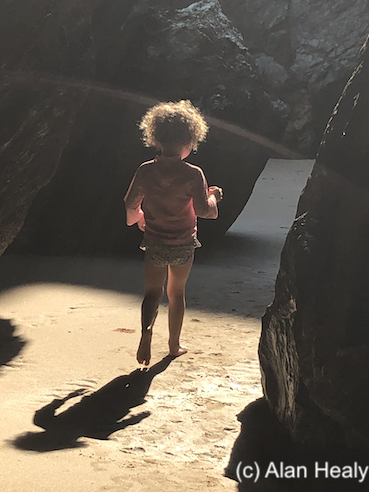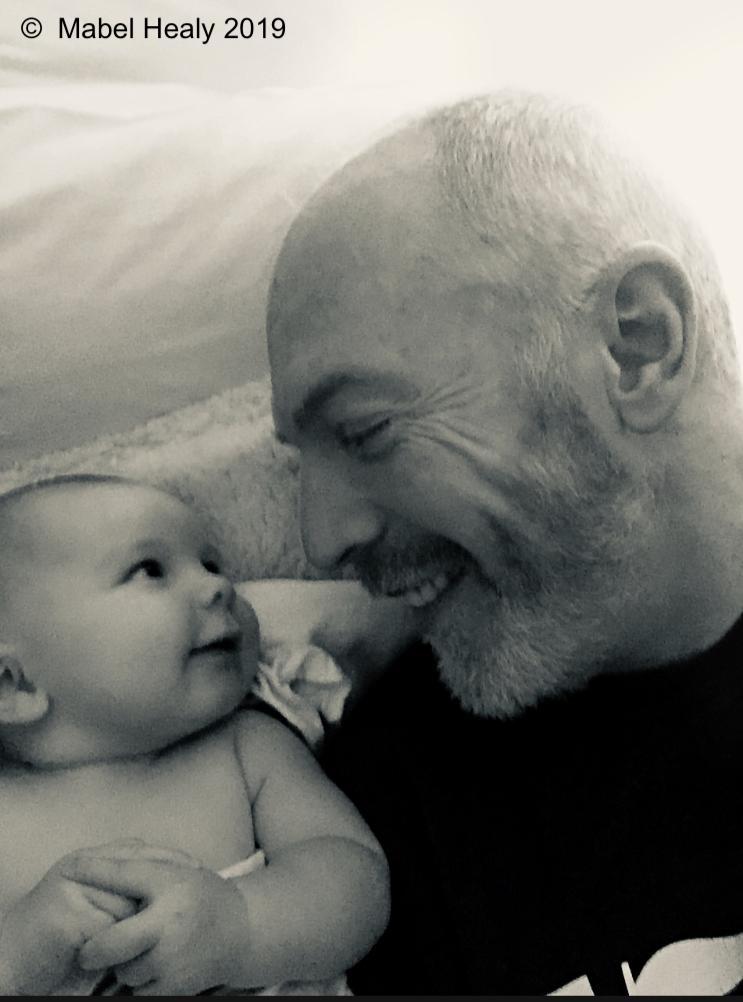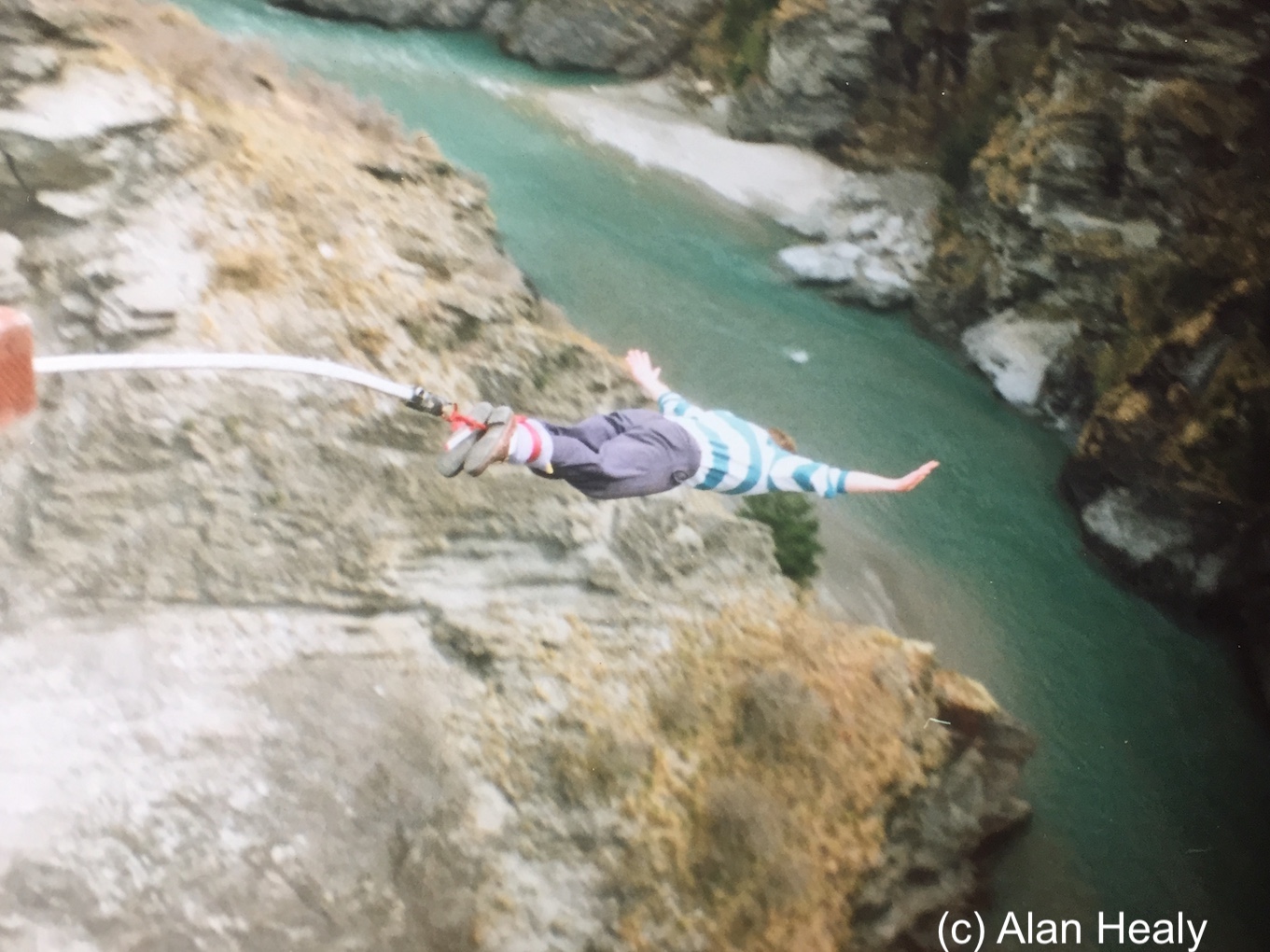“I believe that this nation should commit itself to achieving the goal, before this decade is out, of landing a man on the Moon and returning him safely to the Earth.”
— President John F Kennedy
Pandemics; terrorism; gun violence; knife crime; falling education standards; increases in political polarisation, in obesity, in inflation, in anxiety levels amongst kids. The list is endless…
We live in a time of fear. Fear of many things. And climate change is at, or near, the top of the list.
2050.
Again and again, this apocalyptic date is fired at us.
Twenty. Fifty.
A ghoulish tombstone looming out of the future.
And so I ask… How much better would we feel if 2050 were to be seen in positive terms?
Crazy as it may seem, this is a genuine question.
What if, rather than being thought of as Doomsday, 2050 could be a beacon of hope and possibility?
I’m not a Pollyanna. I don’t expect my personal actions, or even those of my community, to stave off this spectre. And when I think of the world in its entirety – all 195 countries or states – it seems even harder to see a way of making a difference.
But at the country level, could change be more possible? And, if so, might such change have a global impact if replicated by other countries?
What if the prospect of 2050 could help us build the country we want for our kids and grandkids? What if 2050 and the road to it looked something like this for my country, Ireland…
2024
In February, a Ukrainian woman, Yulia, who moved to Ireland in 2022 because of the Russian invasion, meets an Irish man, Sean, and they start dating.
It is the hottest ever March, May and October in Ireland – causing Yulia and Sean some angst, and prompting them to seek out forest walks and to eat al fresco more than they might otherwise have done. Unprecedented flooding causes havoc in April and November – to forest walks and to several towns and cities on the east coast. Like many countries, Ireland’s level of hand-wringing and talking about the need to make big changes in order to stop the world’s temperature rising more than 1.5°C above pre-industrial levels, ramps up. The amount of promises made by politicians also ramps up. Most of the specific promises are not very ambitious.
2025-2026
More hottest-ever months occur, but there’s a slight drop in the number of severe storm and flooding events, which causes some to argue that the climate doom prophecies have been over-done. The not-very-ambitious promises from 2024 are poorly implemented and then forgotten as new shinier promises are made.
In April 2026, 108 weeks after their first date, Yulia and Sean get married. Very concerned about climate change and the lack of measures to slow or even reverse it, they can’t envisage wanting to bring children into the world.
2027
Floods cause record damage across the country, particularly in Cork. And it becomes clear that Ireland will miss its 2030 Paris Climate Accord targets. Not only will this add to future climate carnage at home and abroad, but it will result in fines from the EU of over €8bn per year (a significant amount for a country of Ireland’s size).
Yulia and Sean consider emigrating to Australia – housing is less of an issue there.
2028
In a strange coming together of those who are most concerned about climate change and those who fret about serious financial mismanagement, the country decides that it needs to have a national conversation about what it wants for itself and, by extension, for the world; and that it needs to supercharge a way to overcome the interminable obstacles, objections and interest groups that stop any meaningful progress on reversing climate change. There’s barely a schoolkid over the age of ten who doesn’t know now that Ireland is one of the windiest places in Europe, and that the country’s maritime footprint is ten times that of its landmass. And there’s hardly a fridge in the country that isn’t adorned with some poorly drawn artwork to drive home the message.
2029
Millions – more than ever – die globally over the course of the year in climate-related events.
In November a baby girl is born to Yulia and Sean. They stayed in Ireland after a delay getting Yulia an Australian visa, and lost their doubts about having children some time in 2028. Yulia claims this was due to the “almost radical” national conversation around climate change, how everyone came to agree that something big had to be done about it – and that this gave her hope for the future. Sean isn’t sure. He laughs that it might have had more to do with Yulia’s best friend having a baby boy.
When Molly Zenchenko O’Reilly is born, she is photographed and feted as though she’s the first child of the New Year. Her face appears in every national newspaper. This is because she is born at the exact moment that a particular moment for Ireland – which I’ll call Molly’s Moment for now and which will be explained later.
Molly’s Moment is preceded by over a year of intense debate on the airwaves, in the media and amongst ordinary people. An Education Task Force is set up – like the Covid emergency panel – to help the population understand in simple terms the consequences of climate inaction, the obstacles to action, possible routes to progress, and the financial and other rewards that could follow as a consequence of certain paths taken. In the debate, every obstacle to ameliorating climate change is raised, every interest group gnashes its teeth and every schoolchild gets involved – in formal national competitions or merely with the family at the kitchen table – producing artwork, memes, TikTok videos and old-fashioned stories: anything that reflects their climate vision for the future.
In December the planet’s temperature officially rises to more than 1.46°C above pre-industrial levels.
2030-2032
A myriad of obstacles remain to sorting out the climate crisis, but Molly’s Moment has created a momentum that helps overcome the seemingly intractable. It feels like it must’ve felt at NASA in the early 1960s after JFK made his speech about going to the moon by the end of the decade. Back then, NASA had tens of thousands of employees and if you asked one why they were sweeping the floor, they’d answer: “To help get us to the moon.”
There seems to be huge national acceptance that, apart from the obvious goal of alleviating climate change, there is an enormous opportunity for Ireland; and there is an iron-clad belief – nay, a near-unanimous determination – that this will not be the old story of a small cadre of privileged people thriving at the expense of others; an extraordinary buy-in that everyone will benefit from this opportunity, that the rewards will be fairly shared amongst the people. This common goal, this expectation of the shared ultimate prize, helps put short-term selfish interests in perspective.
Unimaginable floods in Dublin, Cork and Galway also help concentrate minds. Thousands of homes are ruined, many lose their lives and some areas in the south remain uninhabitable for weeks.
By the time Molly starts to walk, the Government, many institutions and companies are learning to walk as well – in a way they haven’t before, towards a common goal.
By the time Molly starts talking, these disparate parties and even the NIMBYs and the nay-sayers are learning to talk to each other in a more far-sighted, win-win fashion.
Meanwhile the world’s average temperature breaches 1.5°C above pre-industrial levels. This sparks protests, with supposedly over 1 billion people marching around the world on Sunday 10 Oct, 2032.
2033-2050
At some stage in the late 2030s, while Molly is in primary school, as the planet’s post-industrial temperature increase reaches 1.65°C and then 1.67°C, and as battery storage technology reaches the levels long-hoped for, Ireland achieves the milestone of 100% of the country’s power coming from renewable sources.
In the early 2040s, when Molly is in secondary school, Ireland becomes one of the biggest exporters of renewable power in the world – mostly offshore wind – and its sovereign wealth fund is taking in over €500bn p.a., an extraordinary sum for a country of Ireland’s size.
Soon after, the planetary temperature increase hits 1.78°C.
2050
On the twenty-first anniversary of both Molly’s Moment and Molly’s birth, Molly graduates as an engineer from University College Galway. Ireland’s sovereign fund has paid for her education, and that of hundreds of thousands of others. It has also contributed hugely to alleviating the health, homeless, housing and other crises that used to be a mainstay of the country.
The UN paints Ireland as a poster child – its sovereign wealth fund has been used even more wisely, strategically and fairly than that of Norway when it had a fund from the proceeds of fossil fuels.
Other countries have followed in Ireland’s wake. The lesson that radiated most around the world in the late 2030s was that a huge opportunity exists if countries can only find their Molly Moment – their collective “going to the moon” moment – that can enable them to overcome all the short-term interests, arguments and obstacles that thwart them from the bigger long-term prize.
Unfortunately, it is too late for some places that have become uninhabitable due to sea level increases and the risk from storm floods – these include cities such as Shanghai, Jakarta and Bangkok; and small island states such as The Solomon Islands and The Maldives.
Earth’s temperature increase is now over 1.9°C but the rate of increase has slowed in recent years and some scientists claim we may not breach the 2°C level before the end of the century. Others claim that 2°C will be breached before 2070, but that recent breakthroughs in carbon capture, fusion, and technologies that were hardly imagined 20 years earlier mean that the planet’s temperature could actually start to reduce before the end of the century, and that this reduction could accelerate into the twenty-second century.
***
That’s the vision.
And we all know that visions of the future can often be seen as wildly optimistic or crazy**. Especially when the obstacles to that vision are all too concrete and visible.
There are planning laws, for example. They can take years to negotiate in Ireland, and can frequently thwart the best laid plans. Even if a Government-owned company gets the permissions needed to install power cables, say, it can be a nightmare if landowners refuse to let them on their property to do the work required. (Incidentally, it’s best to go overground since underground cables have sixty times the faults of overground ones – measured in cost to repair.) Sure, these landowners can eventually be compelled by the law, but that takes more time and expense. Then there are the professional time-wasters whose business model is to act like the most stubborn landowner, knowing that they’ll eventually get paid off (this is not fictitious; in Ireland they generally get one and a half to two times what normal landowners receive).
And this doesn’t even factor into the equation every individual’s own short-term interests which might include not having a windmill blocking a particular view, or being worried (incorrectly) about the health effects of electricity being generated nearby. Or not wanting a carbon tax to apply because it will cost you – even if you’d get that money back from the Government in some other way.
We know that we already have the technology required to live sustainably (and that better and emerging technology will make things even easier and will make the transition even less costly). We just need the political and social will to make the right things happen.
But that’s easier said than done. We need a collective jolt to the system. That jolt may be aided by a particularly bad climate event, but hopefully we are not so stupid as to wait for such cataclysmically awful events to happen that it becomes too late to make a difference. Any idiot could tell the captain of the Titanic that things needed to be done differently after they struck the iceberg.
So how do you apply the collective jolt? How do you get everyone onboard with “going to the moon” and believing that their long-term interests will be served by doing so, and what’s more, that the long-term reward will far outweigh most people’s short-term self-interests? And how can that jolt also be an aid and a catalyst in enabling many obstacles to be more easily negotiated from a legal standpoint?
YES! YES! YES!
We do referendums well in Ireland.
We’ve voted YES to quite a few since the early 1990s – each one generating enormous debate. The one that stays with me most is the one held in 2015, when Ireland became the first country in the world to legalise same-sex marriage through a popular vote. It was a great example of a referendum campaign done well.
The YES campaign faced opposition from old, conservative, Catholic Ireland who argued that allowing gay people to marry would undermine “normal” marriage and, potentially, the very fabric of society. Arguments were made that gay marriage epitomized the depravity and moral downfall of our age, that otherwise straight children would be influenced into becoming gay. And God-forbid that a child could have two fathers! There were even dog-whistle attempts to link gay men with paedophilia.
Could these arguments have been any more hurtful to gay men or women? How galling to have your self-worth and your very existence called into question!
But the YES campaign didn’t rise to the bait. They didn’t become emotional and seek to “beat” the other side. They took a breath and went door-to-door, seeking to persuade one person at a time. They listened with kindness to those with opposing views – mainly an older generation who’d been brought up in a different era. They sought out commonalities and connections.
The deep listening and the kindness of approach allowed genuine conversations to happen. It meant that many of those older diehards were ready to listen when our gay brothers and sisters opened up and told their personal stories. It meant that many who might’ve voted NO were persuaded on their doorstep to vote YES. The figure of “depravity” before them came to be seen for what they were: a good, decent human being who wanted to live their life without being harmed or discriminated against just for being who they were.
Minds were changed. The referendum passed. The law changed. Lives were improved.
And even after the referendum, I believe minds continued to change. Sceptics saw that the fabric of society didn’t tear apart when gay marriage became legal. To the contrary, we became a kinder, fairer society.
LET’S JUST FECKEN DO IT!
Molly’s Moment in the future vision described above is the passing of a referendum putting the need to reverse climate change as a priority for Ireland.
It is for others to come up with the right wording for the amendment to the Constitution to be voted on, but I’d suggest that it needs to have the right blend of motherhood and apple-pie that can capture a vision for our country where we prosper into the future and are not holed below-the-water-line by climate change; and that it needs to give force to the notion that this is a real priority for the country and that the actions to ameliorate climate change will trump most other rights except in the most egregious of cases.
As in the same-sex marriage referendum, much of the national debate and the real work to move the country onto a common “going-to-the-moon” path will come in the 18 months before the referendum itself. These conversations, involving kids, families, institutions and politicians will feed into the ultimate wording for the constitutional amendment and they’ll also feed into the crafting of laws and the realpolitik that would follow as a consequence. This is how we’ll craft the vision – the “moon-landing” – we’re working towards, including how the profits and proceeds should flow to the national climate sovereign fund, and how this fund will be ring-fenced and, ultimately, distributed in an equitable way.
The same-sex marriage debate was potentially more fraught than this one. Yes, this debate is more complex. But we don’t have to solve every problem and understand every technology to make the referendum and the surrounding conversation meaningful and impactful. We just need to agree on some clear principles and reach a position of trust that we are all truly in the same boat here, and that we’ll sink or swim together. It’s about gathering and focusing the collective will to generate an unstoppable momentum.
All political parties and companies would have to sign-on to the principles that emerge. From this, further details, policies and laws will develop.
It’s easy to think of all that could go wrong – the vicious circle we’re used to in much of political life. But virtuous circles are possible too. I’m repeating myself when talking about the moon-landing, but coming up with the Covid vaccinations was another example of extreme co-operation. It sounds out of place here, but the US and UK war efforts during WWII were also examples of how whole societies can mobilize very quickly to a common goal.
CRISIS = DANGER + OPPORTUNITY (in Chinese characters)
Whilst being prepared to mobilize as if for war, we have to try to turn climate change and 2050 into a prospect that conjures more than fear and the thought of looming tombstones.
Approached in the right way, climate change and 2050 could conjure the prospect of opportunity and reward for all. I believe that a national referendum on the subject could be the catalyst to move us there. Ultimately, it could set us on a new and better path – as individuals, as a country, and as a planet.
Note:
** If the vision sounds pessimistic to you from a global perspective then it might be an idea to look at existing authoritative projected climate models. Only the most optimistic ones predict (a) global average temperatures being less than 2°C above industrial levels by 2080, and (b) a general fall in the trajectory of Earth’s temperature in the next 300 years.
* The “vision” described above was inspired by conversations Alan engaged in at Turas – an event designed for coversations about the future.






